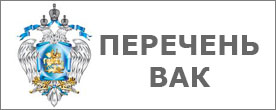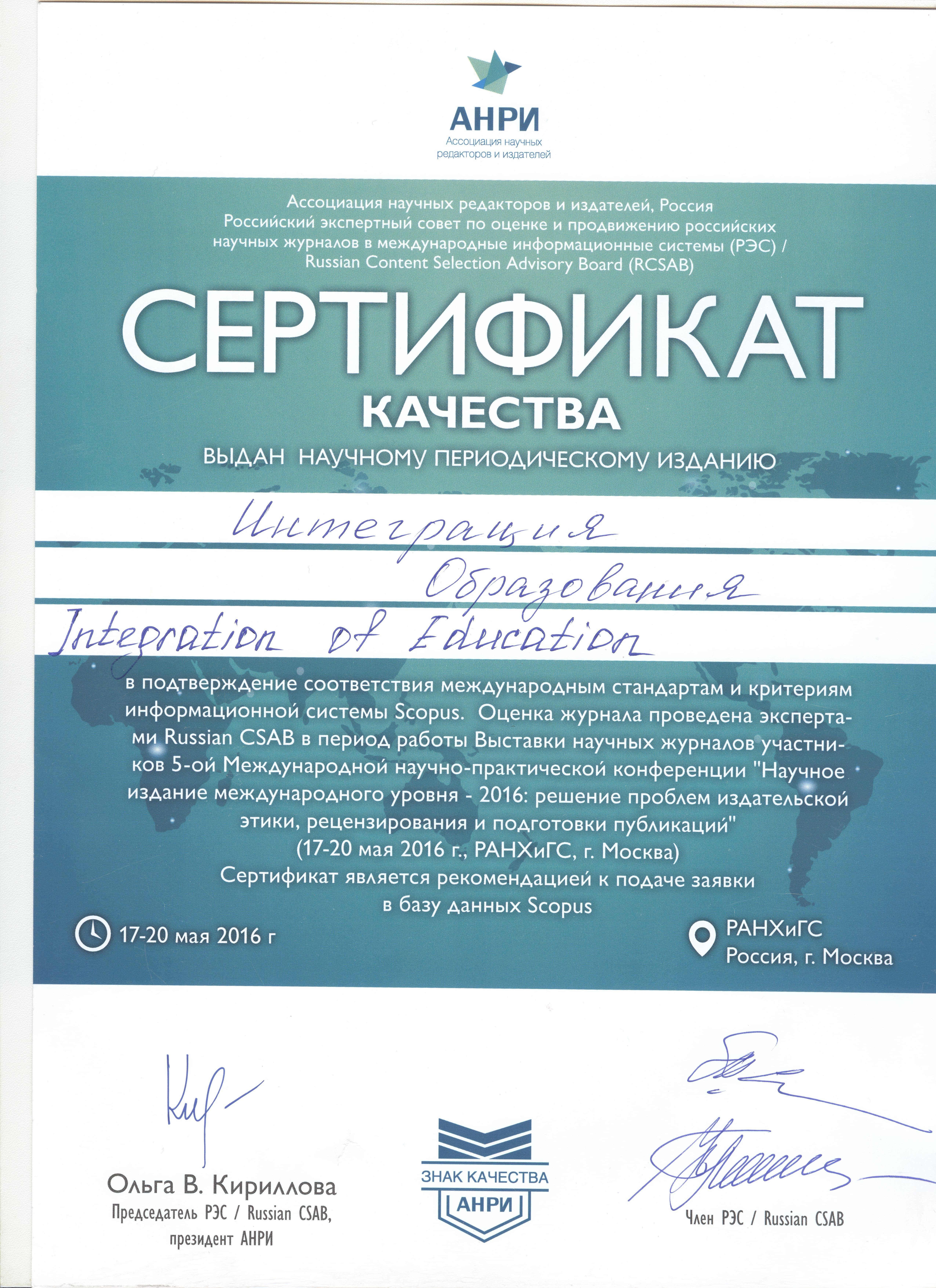DOI: 10.15507/1991-9468.107.026.202202.229-246
Video Conferencing Solutions for Students – Future Teachers’ Professional Socialization
Roman S. Nagovitsyn
Professor of the Chair of Physical Education and Biomedical Disciplines, Glazov State Pedagogical Institute (25 Pervomaiskaya St., Glazov 427621, Russian Federation), Dr.Sci. (Ped.), Associate Professor, ORCID: https://orcid.org/0000-0003-4471-0875, Scopus ID: 56406490800, Researcher ID: N-2363-2016, This email address is being protected from spambots. You need JavaScript enabled to view it.
Roza A. Valeeva
Head of Pedagogy Chair, Kazan (Volga region) Federal University (18 Kremlevskaya St., Kazan 420008, Russian Federation), Dr.Sci. (Ped.), Professor, ORCID: https://orcid.org/0000-0002-8312-4054, Scopus ID: 56114757300, This email address is being protected from spambots. You need JavaScript enabled to view it.
Liliya A. Latypova
Associate Professor of Chair of Foreign Languages and Professional Communication, Kazan (Volga region) Federal University (18 Kremlevskaya St., Kazan 420008, Russian Federation), Cand. Sci. (Ped.), Associate Professor, ORCID: https://orcid.org/0000-0002-5566-1039, Scopus ID: 56115148900, This email address is being protected from spambots. You need JavaScript enabled to view it.
Abstract
Introduction. Despite the numerous publications on the implementation of distance technologies, there are practically no studies on the systematic analysis of various forms of video conferencing that support educational technologies and serve as a practical guide for teachers in teacher training. The purpose of the study is to analyze the experience of implementing video conferencing in various forms of interaction, to identify and experimentally test the effectiveness of their implementation in the process of professional socialization of student teachers.
Materials and Methods. The study was conducted on the basis of the method of reflexive-system analysis of the implementation of video conferencing in the professional training of student teachers. Based on the questionnaire and the method of expert assessments, testing of the level of social and psychological adaptability, professional and behavioral skills, social and emotional comfort of students was implemented. The experiment involved 209 students of the Glazov State Pedagogical Institute and Kazan Federal University.
Results. As a result of the study, it was revealed that the implementation of the group form of video conferencing significantly increases the involvement of almost all students in active communication activities in the classroom. Communication activity in the implementation of social and educational interaction between small and large groups made it possible to most effectively form professional socialization among students. Statistical analysis showed that it was classes in a remote format using video conferencing in subgroups of 4‒5 students that had the greatest positive effect.
Discussion and Conclusion. The conclusions made by the authors contribute to the development of new forms of effective communication through social and educational interaction in the implementation of video conferencing. The materials of the article can be useful in the implementation of teacher education to increase the level of studentsʼ involvement in professional training in the context of distance education.
Keywords: video conferencing, forms of interaction, professional socialization, student teachers, teacher education
Acknowledgements: The authors are grateful to the editors and reviewers for their attentive attitude to the article and for the indicated remarks, which improved its quality.
Conflict of interests: The authors declare no conflict of interest.
For citation: Nagovitsyn R.S., Valeeva R.A., Latypova L.A. Video Conferencing Solutions for Students ‒ Future Teachers’ Professional Socialization. Integration of Education. 2022;26(2):229‒246. doi: https://doi.org/10.15507/1991-9468.107.026.202202.229-246
All authors have read and approved the final manuscript.
Submitted 14.10.2021; approved after reviewing 17.01.2022;
accepted for publication 24.01.2022.
Contribution the authors:
R. S. Nagovitsyn – preparation of the initial version of the text; conducting experiments; development of methodology; collection of data and evidence; formalized data analysis.
R. A. Valeeva – scientific leadership; development of methodology; project administrator; critical analysis and revision of the text.
L. A. Latypova – literature review; data curation; provision of resources; text version of the paper; visualization/presentation of data in text.

This work is licensed under a Creative Commons Attribution 4.0 License.





























